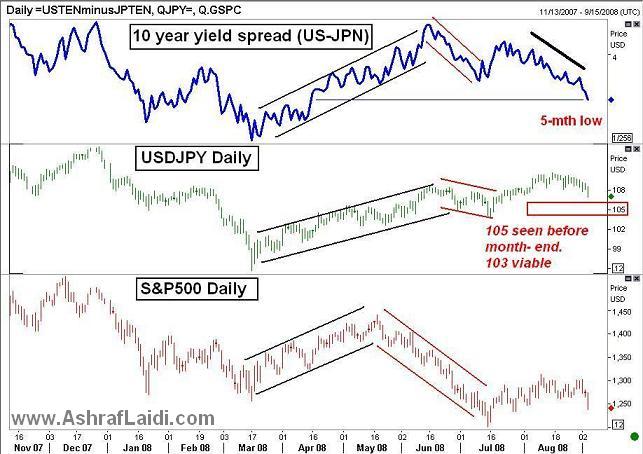FX Implications of Latest US Jobs Report
The jump in the August unemployment rate to a new 5-year high of 6.1% from 5.7% leaves little doubt to currency traders that the USD rally remains largely a manifestation of broadening economic weakness outside of the US, rather than any signs of strength at home. August nonfarm payrolls fell by 84K vs expectations of -75K, in track to match the length of consecutive monthly job losses in the recessions of 1990-91 (11 months) and 2001-2 (15 months).
We do not expect prolonged dollar damage from the gloomy report mainly because the recent dollar strength is NOT a result of improved US fundamentals but of worsening conditions abroad. Poor US jobs data neither alters the reality of economic conditions overseas nor the performance of EUR, GBP, AUD and NZD. Since currency dynamics thrive on relative economic valuation, the rapid deterioration in European and antipodean fundamentals offer plenty for such relative assessment.
The currency consequences mean continued USD strength against GBP, EUR, NZD and AUD, but NOT against the JPY. The 3% decline in US equities and resulting sell-off in global markets reflected the reality that no economy is immune from the global economic slump, prompting further unwinding from dollar shorts and yen longs.
FX Implications
Offsetting the official ECB party line on inflation, new Austrian central bank president and ECB council member Ewald Nowotny said today there is a strong chance that inflation has peaked and that wage demands should consider the CPI peak. In the event that the more established members of the ECB begin to tout similar rhetoric, the single currency could sustain faster declines ahead.
EURUSD managed to regain the $1.43 figure but we expect little follow through above $1.4350. We warn of rapid pullbacks towards the $1.4250s. Similarly, GBPUSD broke above $1.77 from as low as $1.7590, but the stark UK realities are likely to prevent GBP from breaching above $1.7750. Market is apt to begin gradual retreat towards $1.76.
We continue to favor JPY as the next best alternative to USD due to the rapidly deterioration in global risk appetite. As our analysis has shown earlier, JPY is the second best performing currency since the beginning of Q3 and beginning of the year. The chart below shows the yen is gradually gaining ground on the best performing currency since beginning of Q3 (USD), with the evidence showing in the spread of 10-year yields between US and Japan as well as the falling US indices. The divergence between the 2 charts agrees with the daily USDJPY chart, suggesting that 105 and 103 are around the corner.








